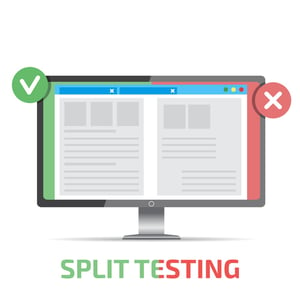How to Set Goals for Your Marketing Automation Campaigns
Diving into marketing automation without setting a clear goal is like giving a major presentation without first having a cup of coffee. You are just muddling your way through. We all know that coffee is essential for peak performance, and so is carefully planning and understanding your target goal; because executing a popular marketing automation technique -like email - is not acquired by luck.
First, you should simultaneously set your goals and launch your marketing automation campaign. Why do both of those things at the same time? Because you can’t select the best strategies without knowing what you’re aiming at, and because those marketing strategies can be your guide toward achieving results.
Be SMART
 How can you set those goals for your marketing automation campaign? Set SMART goals! In other words, set goals that are specific, measurable, attainable, relevant, and time-bound.
How can you set those goals for your marketing automation campaign? Set SMART goals! In other words, set goals that are specific, measurable, attainable, relevant, and time-bound.
SMART goal example #1: I am a coffee distributor (because y'all, coffee is vital!). I want to increase my online sales by 20% in Q2 with an email marketing campaign.
This goal is specific because it clearly defines what I want to achieve before the end of Q2: a 20% increase in my online sales.
This goal is measurable because I specified the numeric percentage of 20% in the metric of online sales. If my online sales in Q1 was $100,000, then my Q2 target is $120,000.
Is this goal attainable? Do I have the means to achieve this particular goal? If I want to boost my online sales, then I need to have the time and resources to hit that target. I have the time, staff, and resources (like coffee!) to reach my goal.
Is this goal relevant? Does this goal align with my overall business strategies? In this example, yes; I want to increase my online sales through email marketing which is related to marketing automation.
This goal is time-bound because it includes a deadline. I want to achieve a 20% increase by the end of Q2. I can further implement this program by creating smaller goals, such as weekly or bi-weekly tasks.
How marketing automation can help set goals
Earlier I mentioned that setting your goals and marketing automation goes hand in hand. Here’s the secret behind how marketing automation helps you set goals: know your collected data and let it be your guide. Use the numbers to your advantage!
SMART goal example #2: If I gained 100 leads in Q2 and want to increase my sales in the next quarter, one of my goals should be to bring in more leads. I can make this goal SMART by rephrasing it: I will increase my number of leads by 25% to 125 in Q3. Therefore, I will target 125 leads next quarter.
Align your marketing and sales goals
When you set a goal, it needs to consider both your marketing and sales teams. Although they may argue like 5-year olds, the two teams really are inseparable in terms of your business’s success. You can’t create goals for one group without thinking about the other. If I want to boost my coffee sales with more leads, then I should find a way to improve the process, like streamlining communications between marketing and sales teams. Maybe the members of your sales team can request customer feedback that could strengthen marketing strategies, which inevitably has a direct influence on sales.
If I want to boost my coffee sales with more leads, then I should find a way to improve the process, like streamlining communications between marketing and sales teams. Maybe the members of your sales team can request customer feedback that could strengthen marketing strategies, which inevitably has a direct influence on sales.
Attention: Don’t underestimate the power of good coffee. It may aid in the alignment of your marketing and sales teams!
Create a defined marketing process
Marketing automation fosters more natural design processes and workflows that better nurture leads down your sales funnel through the use of data and analytics.
Study the behavior of your customers by analyzing your analytics. Your analytics will reveal behavioral triggers to focus on, like every time that a customer shows interest in your offer or clicks one of your links. Or, you can target your audience more appropriately by segmenting a more defined list.
Study the metrics
It’s easier to see the big picture of where you came from, where you are now and where you want to go if you review your metrics. Just like your sales and marketing teams are inseparable, all metrics are interrelated; don’t forget this fact!
Let’s say my coffee business is targeting higher sales figures. I need to look beyond just my leads; I should also check my list growth, open rate, click-through rate, and unsubscribe rates, among other metrics. Having a broad perspective of all my analytics will help me evaluate my marketing strategies and overall goals.
Test. Analyze. Rinse and repeat.
Awesome! Your SMART goals are set, and marketing automation strategies are in place and implemented. Let’s take a moment to celebrate and then kick it back into gear. You can’t just sit back and wait for the results to roll in. Meanwhile, you should test which strategies are most successful and which ones are not performing well so that you can make the necessary adjustments. There are a variety of ways that you can do this. The first is the regular A/B test, where you divide your recipients into two group. Send each group a different version of your email. After testing, analyze which email provided the higher results. Stick with that email tactic.
There are a variety of ways that you can do this. The first is the regular A/B test, where you divide your recipients into two group. Send each group a different version of your email. After testing, analyze which email provided the higher results. Stick with that email tactic.
The A/B test via API is similar. This one allows you to create new tests and to evaluate your results using software. Make sure to set protocols, so you aren’t blasted with a bunch of review emails!
Another test is the automation split. In this option, you send two versions of your email to a limited number of recipients. Analyze which version gave higher metrics, like open rate, click-through rate, response rate, etc. That feedback will aid in the process of deciding which email version is best to send to your customers.
You don’t need to run all of these tests, just choose the one that you are most comfortable with and most capable of running well. The important thing is to analyze your performance and follow the direction of the most effective strategy. Don’t forget to repeat, so you keep on top of your peak performance!
Why marketing automation makes analytics easier
Developing your goals shouldn’t be painful. With analytics, your goals will be data-driven and therefore well-informed. You will be able to see which metrics need improvement and which ones directly impact your overall business goals. And, like coffee, marketing automation with real-time analytics will make reaching your goals much easier!

